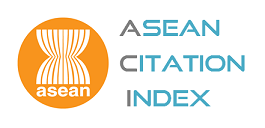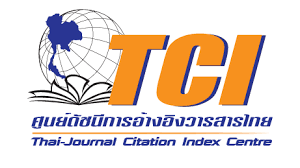Factors Associated with Family Caregiver’s Fall Preventive Behaviors for Older Adults with Low Vision
DOI:
https://doi.org/10.60099/jtnmc.v40i02.272466Keywords:
fall preventive knowledge, fear of falling, caregiving experiences , fall preventive behaviors, low vision, older adultsAbstract
Introduction Older adults with low vision usually have visual impairments associated with eye diseases, leading to reduced vision, decreased ability to focus, difficulty distinguishing colors, trouble adjusting to low-light conditions, and a narrowed field of vision. They also encounter difficulty perceiving depth and may have difficulty seeing peripheral images, resulting in inaccurate distance judgment, leading to accidental collisions and an increased risk of falling. In addition, older adults often experience physical degeneration, which affects their balance and movement, further increasing the risk of falls. Older adults with low vision often experience a self-care deficit, which makes them reliant on family caregivers. Therefore, family caregivers play a crucial role in reducing fall risks by assisting with physical tasks and activities of daily living and providing close supervision. They are also responsible for improving environmental safety, particularly in areas where falls have previously occurred. Encouraging older adults to engage in physical exercises and adhere to fall prevention guidelines is essential. Family caregivers who demonstrate appropriate fall preventive behaviors are vital in minimizing the risk of falls and the resulting harm to these older adults.
Objective This study aimed to investigate the relationships among family caregivers’ fall preventive knowledge, fear of falling, experience in caring for older adults, and fall preventive behaviors in older adults with low vision.
Design A descriptive correlational design was used in this study. The Orem’s self-care agency theory was applied as a conceptual framework. According to Orem’s theory, self-care ability refers to the capacity of an individual to provide care to someone who needs support through deliberate actions with defined goals and who can predict, adapt, and implement actions to meet the comprehensive care needs of the dependent person. The ability to care for older adults involves the caregiver’s capability to perform self-care actions, the ten power abilities, and the fundamental skills and attributes required. The ten power abilities support deliberate self-care, encouraging family caregivers to seek knowledge on self-care and develop skills using thinking and reasoning. Additionally, when family caregivers have prior experience in caring for older adults, they tend to learn, develop skills, and become more proficient in providing appropriate care. Moreover, if caregivers have a fear of falls, this can lead to better prediction of fall risks for older adults.
Methodology Participants were family caregivers aged 18 years and older who provided direct care for older adults (aged 60 and above) with low vision who were appointed at the ophthalmic outpatient department and low vision clinic at two university-affiliated hospitals in Bangkok from August to November 2023. Participants were purposively selected based on the following inclusion criteria: 1) The caregiver must be a family member with a close relationship, living in the same household, and the primary caregiver of an older adult with low vision; 2) The caregiver must be providing care for older adults with moderate to severe dependency, as assessed by the Chula ADL Index, with a score of 9 or lower; 3) If caregivers are 60 years or older, the 6CIT score must be 7 or lower; 4) The caregiver must be fully conscious and proficient in the Thai language, including listening, reading, and writing; and 5) The caregiver must voluntarily agree to participate in the study by signing the consent form. Exclusion criteria included caregivers of older adults who were bedridden. The sample size was determined using the G*power program version 3.1.9.7 with a significance level of .05, with a power set at .80, and an effect size of 0.29, resulting in a sample size of 91 participants. The researchers increased the sample size by approximately 10% to account for incomplete data. Therefore, the study included 100 participants. Data were collected using the demographic questionnaire, the fall preventive knowledge questionnaire, the fear of falling questionnaire, and the fall prevention behavior questionnaire. The reliability of the fall knowledge assessment tool was tested using the Kuder-Richardson coefficient, which yielded a value of .82. The fear of falling questionnaire and the fall prevention behavior questionnaire had Cronbach’s alpha coefficients of .82 and .85, respectively. Data were analyzed using descriptive statistics, Pearson’s correlation coefficient and Spearman’s rank correlation coefficients.
Results The majority of family caregivers (64%) were female, with a mean age of 44 years (SD = 12.63), and completed a bachelor’s degree (51%). The duration of care ranged from 1 to 12 years, with a mean of 4.22 years (SD = 2.95). Approximately one-fourth of caregivers had two years of experience in caring for older adults with low vision (24%). The mean score for fall preventive knowledge was 15.59 (SD = 2.47). The mean score for fear of falling was 20.29 (SD = 2.70), and the mean score for fall preventive behaviors was 67.87 (SD = 6.74). Factors significantly associated with fall preventive behaviors included fall preventive knowledge (r = .197, p < .05) and fear of falling (r = .599, p < .01). However, experience in caring for older adults was not significantly associated with fall preventive behaviors (rs = -.114, p > .05).
Recommendation The study results highlight the importance of fall preventive behaviors among family caregivers of older adults with low vision. The results can serve as preliminary data for future research on the factors predicting fall preventive behaviors in family caregivers of older adults. Additionally, the results can contribute to developing guidelines focused on educating family caregivers about environmental modifications and promoting exercises that enhance balance to prevent falls in older adults.
Downloads
References
GBD 2019 Blindness and Vision Impairment Collaborators; Vision Loss Expert Group of the Global Burden of Disease Study. Causes of blindness and vision impairment in 2020 and trends over 30 years, and prevalence of avoidable blindness in relation to vision 2020: the right to sight: an analysis for the Global Burden of Disease Study. Lancet Glob Health. 2021;9(4): e408. https://doi.org/10.1016/S2214-109X(21)00050-4. PMID: 33275949
Halter JB, Ouslander JG, Studenski S, High KP, Asthana S, Supiano MA, et al. Low vision: assessment and rehabilitation. Hazzard Geriatric Medicine and Gerontology, 7th ed. New York, NY: McGraw-Hill Education. 2017. p. 702-22.
Saftari LN, Kwon OS. Ageing vision and falls: a review. J Physiol Anthropol. 2018;37(1):11. https://doi.org/10.1186/s40101-018-0170-1 PMID: 29685171
World Health Organization. Falls [Internet]. 2021 [cited 2022 July 5]. Available from: https://www.who.int/news-room/fact-sheets/detail/falls/
Ministry of Public Health. Department of Disease Control. Fall facts: older adult fall prevention in Thailand [Internet]. 2022 [cited 2023 April 5]. Available from: https://ddc.moph.go.th/dip/news.php?news=23887&deptcode=. (in Thai)
Ha VT, Nguyen TN, Nguyen TX, Nguyen HTT, Nguyen TTH, Nguyen AT, et al. Prevalence and factors associated with falls among older outpatients. Int J Environ Res Public Health. 2021;18(8):4041. https://doi.org/10.3390/ijerph18084041 PMID: 33921355
Lee S. Falls associated with indoor and outdoor environmental hazards among community-dwelling older adults between men and women. BMC Geriatr. 2021;21(1):547. https://doi.org/10.1186/s12877-021-02499-x PMID: 34641812
Sangboon N, Detprapon M, Monkong S. Adaptation in older persons with visual impairment. Ramathibodi Nurse Journal [Internet]. 2019 [cited 2022 September 6]; 25(1), 29-42. Available from: https://he02.tci-thaijo.org/index.php/RNJ/article/view/141437/129505 (in Thai)
Ang SGM, O’Brien AP, Wilson A. Carers’ concern for older people falling at home: an integrative review. Singapore Med J. 2020 ;61(5):272-80. https://doi.org/10.11622/smedj.2019142 PMID: 31680184
Avila MA, Pereira GJ, Bocchi SC. Informal caregivers of older people recovering from surgery for hip fractures caused by a fall: fall prevention. Cien Saude Colet. 2015;20(6):1901-7. https://doi.org/10.1590/1413-8123201520617202014 PMID: 26060968
Tong CE, Sims GJ, Martin MA. Types and patterns of safety concerns in home care: client and family caregiver perspectives. Int J Qual Health Care. 2016;28(2): 214-20. https://doi.org/10.1093/intqhc/mzw 006 PMID: 26832159
Orem D. Self-care deficit theory. 2nd ed. London: SAGE; 1991.
Hanucharoenkul S. Self-care: nursing art and science. The study of disease, health myth and health behavior. Bangkok: V.J.; 2001(in Thai)
Sawatphon C, Srisuraphol W. Developing the potential of local communities for the depended elderly care in northeast of Thailand. Journal of Palisueksabuddhaghosa [Internet]. 2022 [cited 2023 September 10]; 8(1): 387-404. Available from: https://so05.tci-thaijo.org/index.php/palisueksabuddhaghosa/article/view/255031(in Thai)
Sonpee C, Siripittayakunkit A, Kanogsunthornrat N. Relationship between the caregivers’ basic conditioning factors and knowledge and the caregivers’ behavior towards patients with peripheral arterial occlusive disease. Thai Journal of Cardio Thoracic Nursing [Internet]. 2018 [cited 2023 April 10]; 29(2):55-65. Available from: https://he02.tci-thaijo.org/index.php/journalthaicvtnurse/article/view/164283 (in Thai)
Poonthananiwatkul B, Yantarapakorn A, Junthiang P, Ratanawiboonsook C, Varathanachotikul T. Factors associated with health literacy for self-health care of among people in the working age group. Thai Journal of Public Health and Health Sciences [Internet]. 2021 [cited 2022 April 5]; 4(3): 187-203. Available from: https://he02.tci-thaijo.org/index.php/tjph/article/view/250646/173505 (in Thai)
Shang S, Zhang Q, Qi L, Liu T, Shengguang C, Song L, et al. Caregivers’ fear of older care recipients falling: a systematic review of qualitative studies. Geriatr Nurs. 2023;51:303-316. https://doi.org/10.1016/j.gerinurse.2023.03.017. PMID: 37031582
Mamani ARN, Reiners AAO, Azevedo RCS, Vechia ADRD, Segri NJ, Cardoso JDC. Elderly caregiver: knowledge, attitudes and practices about falls and its prevention. Rev Bras Enferm. 2019;72(suppl 2): 119-126. https://doi.org/10.1590/0034-7167-2018-0276 PMID: 31826200
Ang SGM, O’Brien AP, Wilson A. Understanding carers’ fall concern and their management of fall risk among older people at home. BMC Geriatr. 2019;19(1):144. https://doi.org/10.1186/s12877-019-1162-7 PMID: 31126237
Baixinho CL, Dixe MDA, Henriques MA, Marques VC, Sousa L. The fear of falls in the caregivers of institutionalized elders. Rev Gaucha Enferm. 2021; 42:e20200258. https://doi.org/10.1590/1983-1447.2021.20200258 PMID: 34287601
Prasomsuk S, Nilnate N, Kerdnu K. The study of knowledge attitude in elderly care and perceived self efficacy of caregivers for elderly dependency in Phetchaburi province. Journal of Health Sciences Scholarship [Internet]. 2020 [cited 2022 September 8]; 7(1): 1-12. Available from: https://he01.tci-thaijo.org/index.php/johss/article/view/226892/165273 (in Thai)
Joprempree K, Tabootwong W. Experiences of primary caregivers in caregiving for older family members with bedridden at home Boromarajonani college of nursing, Uttaradit Journal [Internet]. 2022 [cited 2023 May 8] ;14(1):191-205. Available from: https://he01.tci-thaijo.org/index.php/unc/article/view/255362 (in Thai)
Shrestha P, Fick DM. Family caregiver’s experience of caring for an older adult with delirium: a systematic review. Int J Older People Nurs. 2020;15(4):e12321. https://doi.org/10.1111/opn.12321 PMID: 32374518
Flaxman SR, Bourne RRA, Resnikoff S, Ackland P, Braithwaite T, Cicinelli MV, et al; Vision loss expert group of the global burden of disease study. Global causes of blindness and distance vision impairment 1990-2020: a systematic review and meta-analysis. Lancet Glob Health. 2017;5(12):e1221-e1234. https://doi.org/10.1016/S2214-109X(17)30393-5 PMID: 29032195
Nampan J, Auemaneekul N, Kalampakorn K. Factors influencing job performance among trained caregivers for caring dependent elderly in Bangkok. The Journal of Faculty of Nursing Burapha University [Internet]. 2020 [cited 2022 September 8]; 28(3): 41–52. Available from: https://he02.tci-thaijo.org/index.php/Nubuu/article/view/246064 (in Thai)
Pholin T, Jitramontree N, Wirojratana V. The Relationships between personal factors health status fear of falling and fall preventive behaviors of community dwelling older persons. Journal of Nursing Science Chulalongkorn University [Internet]. 2020 [cited 2022 April 14]; 29(1):36-48. Available from: http://he01.tci-thaijo.org/index.php/cuns/article/view/87497 (in Thai)
Brooke P, Bullock R. Validation of a 6 item cognitive impairment test with a view to primary care usage. Int J Geriatr Psychiatry. 1999 Nov;14(11):936-40. PMID: 10556864.
Aree-Ue S, Youngcharoen P. The 6 item cognitive fuction test-Thai version: psychometric property testing. Ramathibodi Nurse Journal. [Internet]. 2020 [cited 2022 September 6]; 26(2):189-202. Available from: https://www.rama.mahidol.ac.th/ramanursej/sites/default/files/public/rnj/2021/V26/N02/RNJV26-N02-MAY-SEP-2020-05.pdf (in Thai)
Punlomso S. Effects of health belief model with exercising program on fall prevention among the elderly in Khok Klang subdistrict Nonsaad district Udonthani province [Dissertation].Udonthani: Mahasarakham University; 2019 (in Thai)
Yang R, Donaldson GW, Edelman LS, Cloyes KG, Sanders NA, Pepper GA. Fear of older adult falling questionnaire for caregivers: evidence from content validity and item-response theory graded-response modelling. J Adv Nurs. 2020;76(10):2768-80. https://doi.org/10.1111/jan.14473 PMID: 32803911
Kittipimpanon K, Kraithaworn P. The effectiveness of community-Base fall prevention model to physical performance and fall among older adults in an unban community Bangkok: The follow up study. Journal of Public Health Nursing. [Internet] 2015 [cited 2022 January 20]; 29(1):98-113. Available from: https://he01.tci-thaijo.org/index.php/phn/article/view/48513 (in Thai)
Mangmee S, Monkong S, Sutti N. Relationships between mutuality, preparedness, and predictability to care, and caregiver role strain from caregiving activities for older people. Journal of Thailand Nursing and Midwifery Council [Internet]. 2021 [cited 2022 April 5]; 36(3):151-163. Available from: https://he02.tci-thaijo.org/index.php/TJONC/article/view/248862 (in Thai)
Tan GTH, Yuan Q, Devi F, Wang P, Ng LL, Goveas R, et al. Dementia knowledge and its demographic correlates amongst informal dementia caregivers in Singapore. Aging Ment Health. 2021;25(5):864-72. https://doi.org/10.1080/13607863.2020.1740914 PMID: 32228179
Pensuk P, Chaiyapan N, Valaisathien J. Health literacy in disease prevention and control among health personnel in Nakhon Ratchasima province in 2021. The office of disease prevention and control 9th Nakhon Ratchasima Journal [Internet]. 2021 [cited 2022 April 20]; 29(3): 5-18. Available from: https://he02.tci-thaijo.org/index.php/ODPC9/article/view/259733 (in Thai)
Taylor B, Stevenson M, Taylor BJ. Risk communication in dementia care: professional perspectives on consequences, likelihood, words and numbers. British Journal of Social Work. 2016; 47(7), 1940- 1958. https://doi.org/10.1093/bjsw/bcw161
Walling I, Siva R, Immanuel S, Abraham V, Gowri M, Simpson C. Effect of a risk reduction intervention strategy on caregiver’s knowledge, attitude and practice related to fall prevention. Indian Journal of Continuing Nursing Education. 2019;20(1):28- 32. https://doi.org/10.4103/IJCN.IJCN_13_19
Bloom B. Taxonomy of educational objectives: The classification of educational goals: Handbook: Cognitive domain. 1964; 1st ed. New York; Mckay.
Bhala RP, Donnell J, Thoppil E. Ptophobia. Phobic fear of falling and its clinical management. Phys Ther. 1982;62(2):187-90. https://doi.org/10.1093/ptj/62.2.187 PMID: 6120526
Downloads
Published
How to Cite
Issue
Section
License
Copyright (c) 2025 Journal of Thailand Nursing and Midwifery Council

This work is licensed under a Creative Commons Attribution-NonCommercial-NoDerivatives 4.0 International License.








